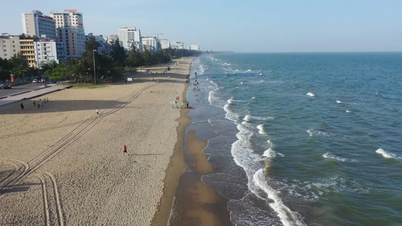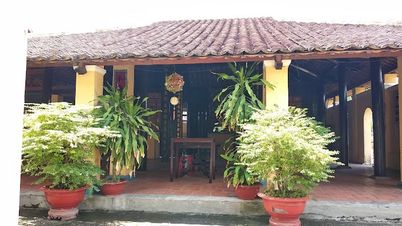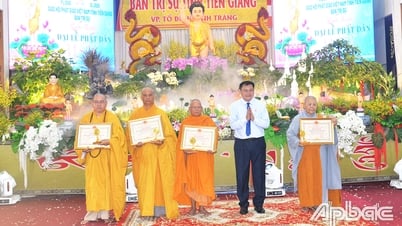Three UNESCO heritage sites in Vietnam are on the list of 16 world heritage sites in Southeast Asia recommended by a British travel magazine as most worth visiting.
In 11 countries in Southeast Asia, there are 41 destinations recognized by UNESCO as world heritage sites, including wildlife parks, natural wonders, temples... Wanderlust travel magazine selected 16 destinations to suggest readers to visit, of which Vietnam has 3 names mentioned: Ha Long Bay, Hoi An ancient town and Phong Nha - Ke Bang National Park.
Ha Long Bay in Quang Ninh Province is at the top of the list. The British travel magazine describes the complex of 1,600 limestone mountains, large and small, on the bay as "the most impressive in the world". This place was first recognized by UNESCO in 1994. 20 years later, the nature of Ha Long Bay has remained virtually unchanged, except for the increasing number of tourists coming here.

The limestone mountains create the unique features of Ha Long Bay. Photo: Unsplash.
Erosion has created natural caves, adding to the appeal of the destination.
Activities to explore Ha Long Bay suggested by Wanderlust include kayaking to visit Thien Cung Cave - a cave famous for its impressive stalagmites and stalactites, or visiting oyster farms and exploring small beaches offshore.
The second place mentioned is Hoi An ancient town, Quang Nam. This ancient town was recognized by UNESCO as a world cultural heritage in 1999. The yellow-walled houses, red-tiled roofs covered with moss, and the peaceful pace of life here seem to be separate from modern life. Wanderlust newspaper introduced this city as a prosperous port town and home to merchants from all over Asia.
About 200 years ago, the Thu Bon River silted up and traders gradually moved away. Reminiscences of Hoi An’s multicultural past can be found today in the French-style buildings, Chinatown and Japanese-style bridge. The assembly halls in the old town also show Chinese influence. A highlight of Hoi An mentioned by a British travel magazine is the lanterns that light up the old town at night.
The third name on the list is Phong Nha - Ke Bang National Park. This place has been honored by UNESCO twice. The first time in 2002, UNESCO recognized Phong Nha - Ke Bang National Park as a world natural heritage based on geological and geomorphological criteria. In 2015, this place was recognized as a world natural heritage based on biodiversity criteria.
Wanderlust describes the stunning caves and underground rivers that "create the blood vessels" of this magical underground habitat. One of the highlights of the National Park is Son Doong Cave, recognized as the world's largest cave. The cave is 5 km long and so large that "a skyscraper could be stuffed inside". This place officially welcomed tourists in 2013. There is also Va Cave, which is also an interesting destination when visiting Phong Nha - Ke Bang National Park. Some easily accessible caves include Toi Cave and Thien Duong Cave.
In addition to the 3 destinations in Vietnam, Wanderlust also mentioned 13 other UNESCO heritage sites in Southeast Asia. The locations include the Singapore Botanic Gardens, Luang Prabang (Laos), Gunung Mulu National Park (Malaysia), Sukhothai Ancient City (Thailand), Preah Vihear Temple (Cambodia), Komodo National Park (Indonesia), Tubbataha Reefs Natural Park (Philippines), Philippine Cordilleras Rice Terraces (Philippines), Kinabalu National Park (Malaysia), Sumatra Rainforest Heritage Site (Indonesia), Angkor Archaeological Park (Cambodia), Thungyai-Huai Kha Khaeng Wildlife Sanctuary (Thailand) and Borobudur Temple Complex (Indonesia).
Bich Phuong (According to Wanderlust )


![[Photo] Prime Minister Pham Minh Chinh receives Swedish Minister of International Development Cooperation and Foreign Trade](https://vphoto.vietnam.vn/thumb/1200x675/vietnam/resource/IMAGE/2025/5/12/ae50d0bb57584fd1bbe1cd77d9ad6d97)

![[Photo] Prime Minister Pham Minh Chinh works with the Standing Committee of Thai Binh Provincial Party Committee](https://vphoto.vietnam.vn/thumb/1200x675/vietnam/resource/IMAGE/2025/5/12/f514ab990c544e05a446f77bba59c7d1)

![[Photo] Prime Minister Pham Minh Chinh starts construction of vital highway through Thai Binh and Nam Dinh](https://vphoto.vietnam.vn/thumb/1200x675/vietnam/resource/IMAGE/2025/5/12/52d98584ccea4c8dbf7c7f7484433af5)





















































































Comment (0)